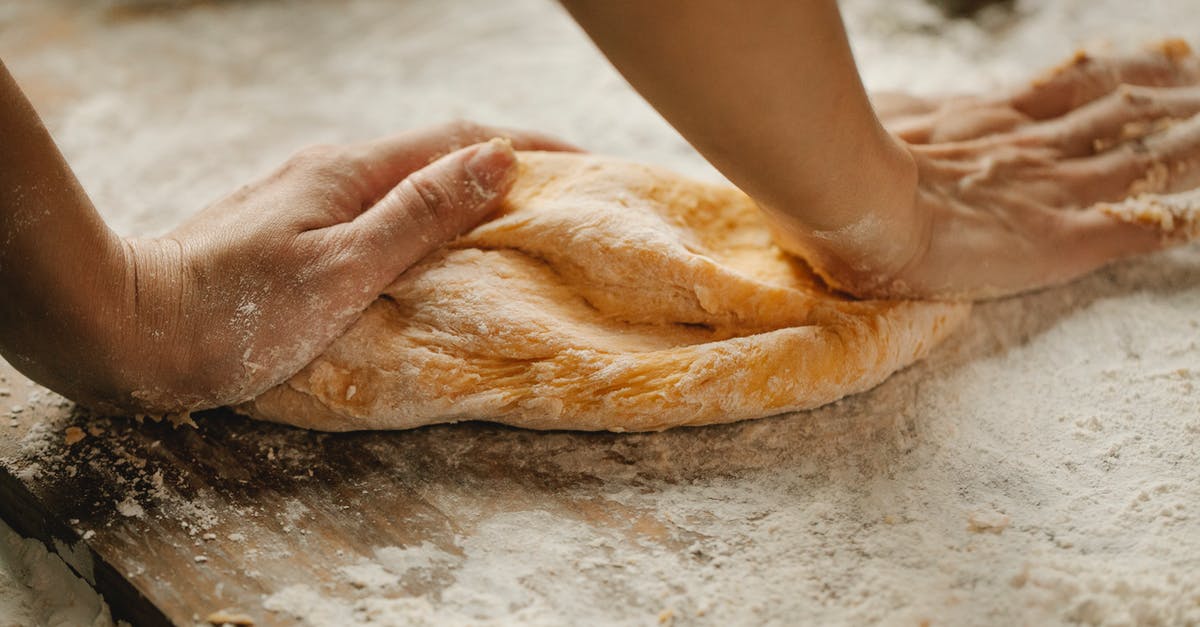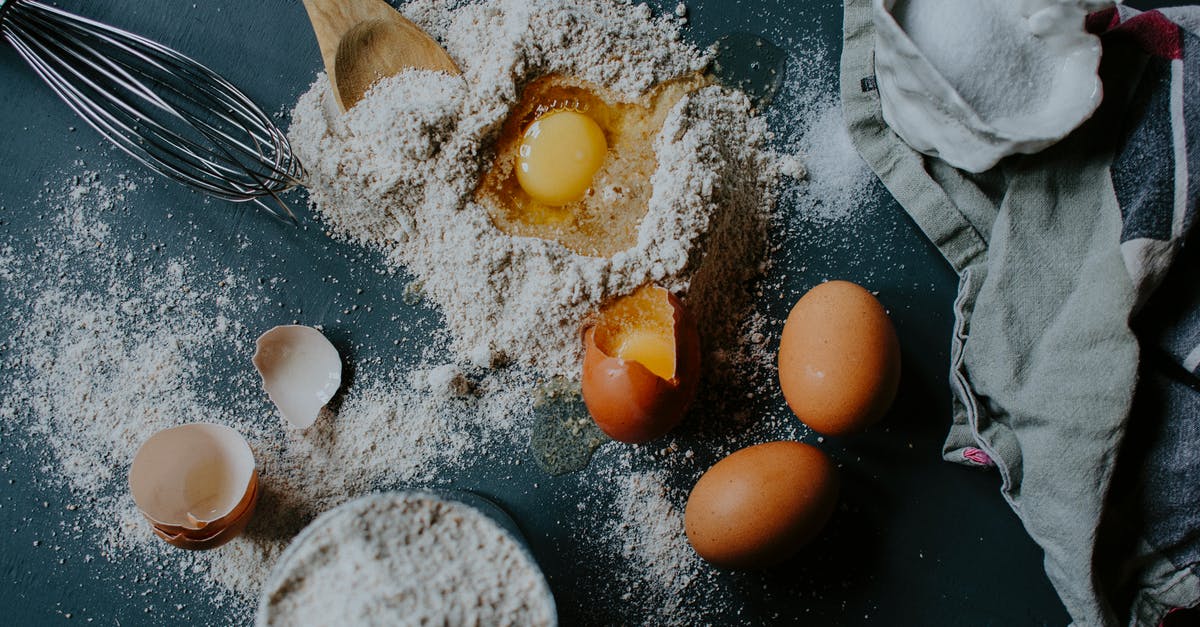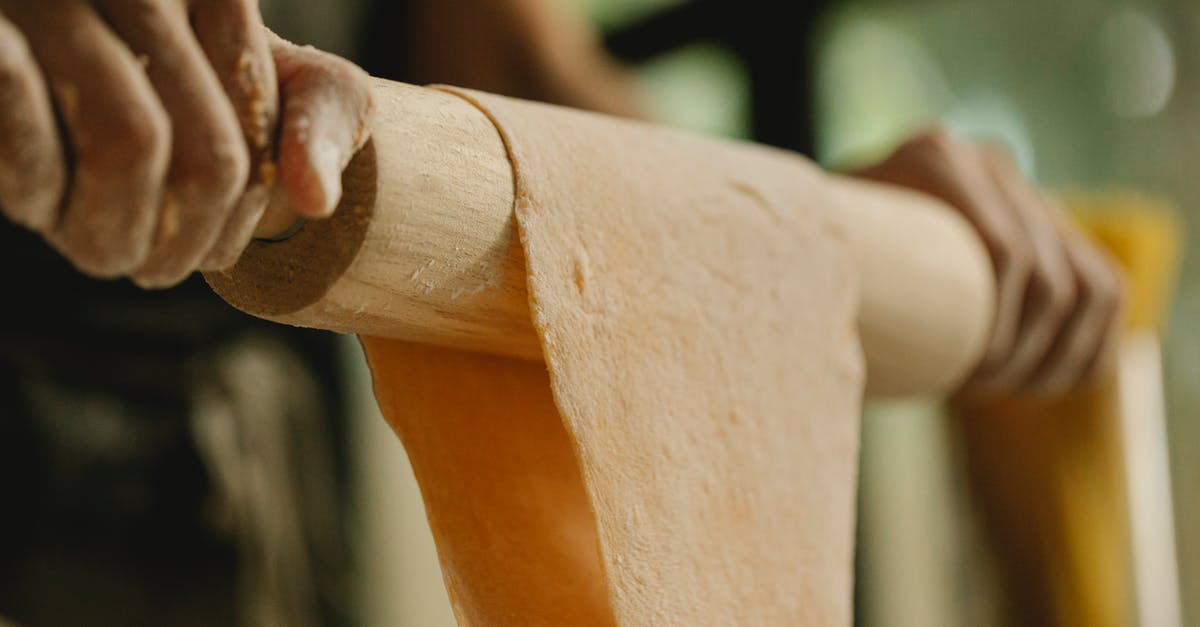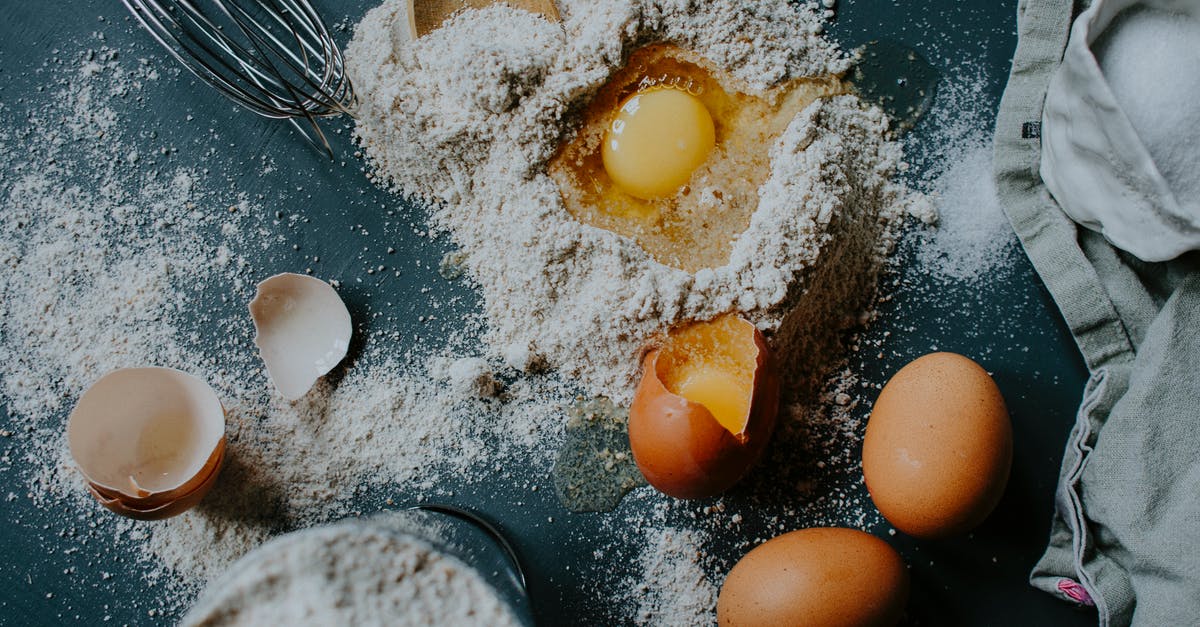Chewy, Moist & Bit Uncooked Bread

I used a pre ferment of yeast flour & water kept for 3 hours to ferment. Later kneaded this into whole wheat dough I had kneaded earlier. Then rising, rolling it , rising again over 2 hours. Till here all was going well with dough puffing , rising etc. For last proofing, I shaped the dough, slashed and placed in pan to proof. It did not rise much over 1 hour. Then I baked it. The bread came out Moist, Chewy, elastic like the everyday sandwich breads with airy holes but still tasted uncooked & tasteless!!!! Its also heavy to hold unlike light airy slices of bread!! It stayed moist next two days also.... but did not taste so good as claimed about slow rise breads. I still cant understand whether the uncooked tastelessness is because I used doughs separately & kneaded them. Or is it that I kept it for 5-6 hours for rise. 
Best Answer
I think you over-kneaded and over-proofed your dough. When using a pre-ferment you are supposed to use it as an ingredient in your dough, mixing it in before kneading. Kneading is not a great way of combining a ferment into a dough, you'd have to work it so much to get it mixed you are likely to end up with too much gluten development and a dense result.
5-6 hours is a lot of time to rise a dough at room temperature, and what has probably happened is that the yeast exhausted the available sugars and died, which collapses the dough.
Slow rising and pre-ferments do improve the flavor of dough when done correctly. The most important concept in slow rising is temperature control. Yeast at room temperature will eat sugar and produce CO2 at a much higher rate than they will at refrigerator temperature. A slower rise leads to more flavor, but you can't just proof it for longer as your yeast will end up dying as explained above - if you want a long rise you must lower the temperature. When I want a slow rise I will proof my dough in the fridge overnight.
Pre-fermenting is a method I use and I like the result, but it's not some sort of magic process that turns bland dough into amazing dough. You'll get a bit more flavor and better structure, however you need to start with a recipe which will be tasty without it. Pre-ferments aren't sourdough starters.
I would say try fermenting your pre-ferment in the fridge overnight instead of 3 hours room temperature, then mix it in with the water for the rest of the dough before adding the flour and other ingredients. Knead it and proof it until it doubles to triples in size, then shape it and let it rise again. Once it's risen well slash it and bake it immediately. Don't slash and then rise again- the slash is to help the bread open up in the oven.
It's also possible your bread couldn't expand once in the oven, try putting a pan of water in the oven for the first half of the bake, it will keep the crust from hardening too quickly.
Pictures about "Chewy, Moist & Bit Uncooked Bread"



Why is my bread a bit chewy?
The most common reason for chewy bread is the type of flour. Using flour that is hard wheat, or that's high in gluten can make bread chewy. Another possibility is a lack of kneading and proofing. These errors lead to a lack of gas in the dough, making bread dense and chewy.Is my bread moist or undercooked?
There's a less scientific way to test your bread, too. Just remove the loaf from its pan or baking stone (once it's cool enough to handle) and firmly thump the bottom of the loaf with your finger. If the bread sounds hollow, then it's most likely cooked all the way through.Why is my bread too moist on the inside?
This is because the steam that was trapped inside while baking still needs to escape. This "sweating" will make the crust softer at first but will harden up again after it is fully cooled. If you cannot wait until the bread is fully cooled, then just be prepared for a damp crumb.Moist \u0026 Chewy Chocolate Crinkles | Easy Choco Crinkles Recipe | Cookie Recipe (Fudgy \u0026 Chewy)
Sources: Stack Exchange - This article follows the attribution requirements of Stack Exchange and is licensed under CC BY-SA 3.0.
Images: Klaus Nielsen, Flora Westbrook, Klaus Nielsen, Flora Westbrook
